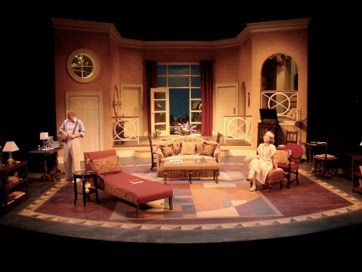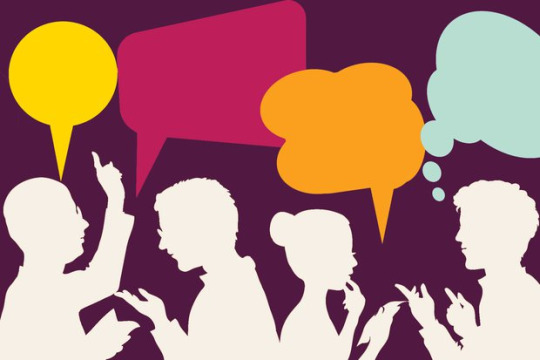Don't wanna be here? Send us removal request.
Text
I think the biggest sin in humanity is letting the superbowl happen FIFTY SIX TIMES
#super bowl#relatable memes#trending#mentally fucked#sin#like why its just men groping each other#relevant#tags are weird#meme#football#men are hot and all but like wtf#dashboard
6 notes
·
View notes
Photo

Abandoned Escalator in a Japanese Theme Park
181 notes
·
View notes
Text
soft prompts for couples who aren’t together yet
hugs that last a little longer than they should
immediately looking at the other after telling/doing something funny in hope to see their smile
making playlists and mood boards for the other
trying to learn about the others interests
continuously denying others who think they are together
“no we are not together!! … at least not yet…”
finding similar fictional characters who shares the other one’s MBTI and enneagram type
trying to know little things about them by observing
always giving the utmost attention to the other if they are in a crowd
associating random things with them
getting matching key rings
hanging out together often
13K notes
·
View notes
Text
Downsides of writing alternative timelines
You have to actually research THIS timeline..
Like I'm writing to escape this timeline not get more depressed.
#writing#writeblr#original story#dystopia#dystopian#scifi#alternative timeline#ihatewriting#fuck the ussr
4 notes
·
View notes
Text
“People seem not to see that their opinion of the world is also a confession of their character.”
— Ralph Waldo Emerson
508 notes
·
View notes
Text
Right okay yes introductions ahem.
This account is a blog for a russian SciFi cyberpunk esk nuclear winter novel I am writing. I will post updates and even snips of the story if not chapters to this blog. I currently don't know where I want this story to go so I may fully post the series here. I'm finally starting to take the story more seriously and actually putting time out of my week to brainstorm and start drafting.
In the mean time feel free to leave asks if you wanna know more or if you have questions about the setting/story/characters.
#writing#scifi#cyberpunk#android#alternative timeline#original story#original content#original character#dystopia
6 notes
·
View notes
Text
Tips on How to Write Dialogue

Here's an updated version of my old post! As I've grown as a writer, I realized the wording and the tips of my old post weren't as good as they could be, so I decided to completely revamp it!
Dialogue is incredibly tricky, for both beginners and experienced writers alike. It can be too overworked, as in cluttered with speech tags and descriptions, or too bare-bones, struggling to have any liveliness.
The main reason dialogue is so difficult is because of the complexity of human communication. It's a paired dance between nonverbal and verbal communication, and how people's demeanor may or may not embody what's coming out of their mouth. Without visuals or audio at your disposal to act as an aid for the reader, writing a good, realistic conversation can be hard to get right.
Here are some tips and tricks for those who've been struggling with their dialogue!
1. Punctuate it Right

No matter how good your writing is, readers will have a tough time loving it if it's improperly punctuated. Many of us have come across fanfictions where it is near-impossible to read the dialogue, or to distinguish between the people who are speaking. But knowing all the ways not to punctuate dialogue doesn't make it easy to figure out how to do it correctly.
Here's some sample dialogue to see correct punctuation in action.
"I am speaking," Character A says with a wave.
"I am replying," answers Character B, "but I also have something to say after my speech tag."
"You do not have to put a comma at the end of your sentence if there's no speech tag." Character A winks. "If you want to, it's also okay to put a period after the interrupting phrase instead of a comma, if the next line of dialogue is a new sentence."
"There's also an exception for exclamation points!" Character B announces. "You don't need a comma after exclamation points."
Here are some more specified rules:
1. Please use quotation marks (" ") to show when someone is speaking
'This is incorrect punctuation' and -so is this- and <so is this>
2. Please don't use caps to show anger or shouting. Although there's nothing wrong with this, it does come off as childish.
Instead of doing this, you can put an exclamation point at the end of the sentence and strong speech tags like 'roared' or 'bellowed' or 'screeched.' Although caps may portray anger in a more literal sense, it isn't very professional, especially if you use a lot of it.
3. You can put a period or a comma after an interruption sentence, but make sure to stay consistent.
"This is correct," she says, "It is a good way to punctuate."
"This is also correct," she says. "But you need to stay consistent. and not switch around."
"This does not apply," she says, "when the second line of dialogue is a continuation of the first and not its own sentence."
4. Start a new paragraph whenever the speaker changes
"This is very important for readers' comprehension," he says.
"If it's all one big block, how will they now which one of us is talking?" she adds.
"This isn't right," he says. "It's very confusing," she agrees.
5. If you have a very long monologue that's becoming one big block of text, you can break it up with a paragraph break. Here's how:
"I'm going to be talking for a very long time. You can skip this if you want. Really the most important part is at the end of this paragraph. You should probably skip to that. These words are just to take up space. You're still here? Aww, thank you for listening to me, but this is just an example. Normally this paragraph would be a lot longer, but I'm keeping it short so that I don't take up that much room.
"See what I did there? I didn't use a quotation mark at the end of the first paragraph, but began the second paragraph with a quotation. That way, you don't think the person has stopped speaking."
2. Try Cutting Down Your Speech Tags

I know it’s a groaner; seemingly every writing advice blog says this. Don’t worry, I get it.
If you don’t know what a speech tag is, it’s a verb (usually paired with a name or pronoun) after a line of dialogue to describe how a character is saying that certain line of dialogue.
(Example: “I don’t want to go,” she argued.)
You can find my master list of speech tags here.
Speech tags can be an incredible resource, and can really help kick your dialogue up to the next level, but if they're overused, they can get in the way.
If your dialogue is coming off very stilted and unnatural, then too many speech tags might be the cause.
Look through your work, considering each case on an individual basis, and try eliminating unnecessary speech tags depending on what you think best fits your story.
For example:
“Shut up!” she shouted.
This isn’t necessarily a bad example, not by a long shot. But if you’re having trouble with rhythm in this particular section of your story, maybe consider taking out the ‘she shouted’ part. With the exclamation point, we can assume she shouted the line.
Also, dialogue between two people can have less speech tags, too.
For example:
“Hey, what’s up?” she greeted. “How was school?”
“Fine,” he snapped.
"Doesn't sound fine," she pointed out.
"Whatever," he scoffed.
Now, let's see how this exchange sounds without some of the speech tags making it cluttered.
"Hey, what's up?" she greeted. "How was school?"
"Fine," he snapped.
"Doesn't sound fine."
"Whatever."
As you can see, I kept the two first speech tags to make sure the readers know who is speaking (as well as the tone of the conversation), which is why it's important to not go around hacking away speech tags without considering the context.
But the speech tags I did cut out made the dialogue flow a whole lot easier! Sometimes you have to sacrifice the specificness of your character's delivery of the line in favor of smooth, rhythmic flow of speech.
3. Add Some Choreography or Give Your Characters Props to Spice Things Up

Choreography doesn't mean a full dance number, but rather actions that can go along with your dialogue. This tip is for writers who may be struggling to make their dialogue lively or exciting.
Actions and choreography can also substitute in for speech tags.
Instead of:
"What the hell were you thinking?!" he roared.
You could try:
"What the hell were you thinking?!" He slammed his fist on the table, his eyes blazing.
In both instances, you can tell the character is angry, only the second one is a more 'show, not tell' approach to things.
The scene can also benefit from a "situation," such as people eating their food or washing the dishes, and the dialogue in turn would then be interrupted by describing people performing actions associated with that "situation," such as taking bites or sipping drinks.
Things you can describe while someone is speaking:
Mouth movement (smiling, scowling, lips twitching)
Eye movement (Glaring, rolling, fluttering, darting around)
Jaw twitching
Fidgeting
Sweating
Shifting weight
Moving around the scene
Breathing (sighting, letting out a heavy breath, panting, breath hitching)
Using props during the activities that are going on (cutting up vegetables, chewing, drinking, etc.)
And more!
Make sure not to overuse these descriptions, though, because like with speech tags, they do have the potential to clutter up your dialogue!
Try to intersperse them whenever you feel like your dialogue needs a bit more action going on, or feels too sparse and fast-paced.
4. Learn From the Professionals

The best way to get better at writing dialogue isn't going to be a random post on Tumblr like this, it's going to be by consuming other media and embodying the things you see.
Put on your favorite movie or TV show. Study how the characters look when they speak, how they talk, how the scene is set up. Look at how the actors portray the emotions their characters are having, and how the dialogue itself is paired in tandem with scene choreography.
Read your favorite books, too, and see how the authors write their dialogue. You may find that they all have different styles and ways of doing it, and can adopt ideas from each!
5. If You're Getting Stuck, Write the Dialogue First

If you're having a lot of trouble writing the entire scene, just write down the dialogue. Nothing else. Try to make the conversation as interesting as possible while still being bare bones, and make sure it accomplishes the goals that you want it to.
Do you want to make two characters grow closer?
Do you want to introduce a new plot point?
Foreshadow?
Make sure all that gets done in the bare-bones version so that you don't get too caught up in the embellishment to remember, then add everything else in later!
Hope this helped, and happy writing!
2K notes
·
View notes


